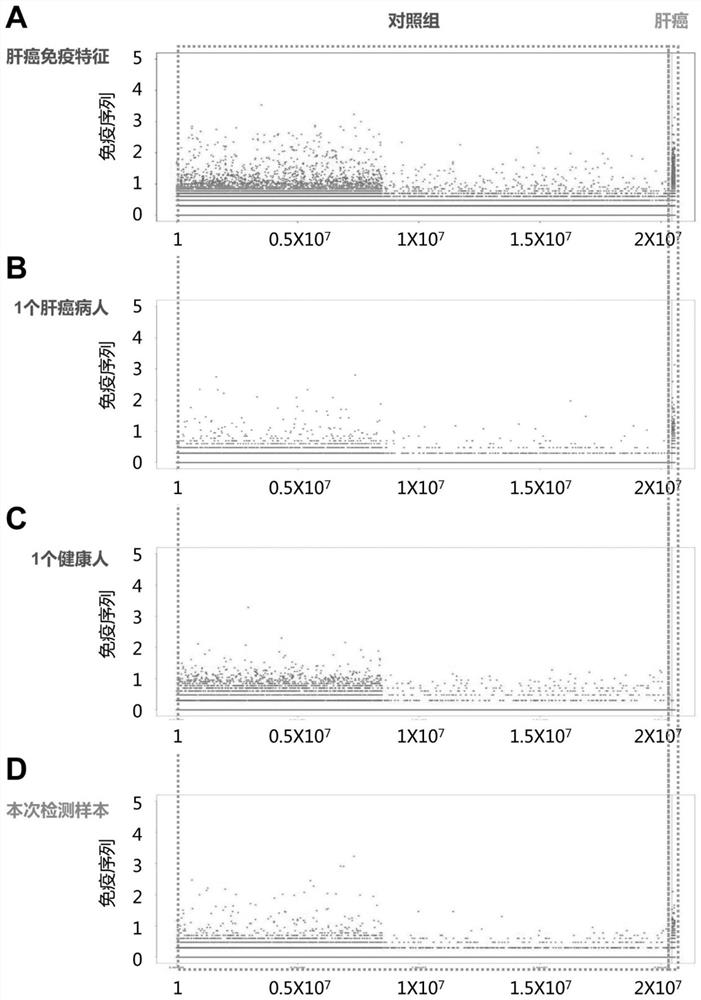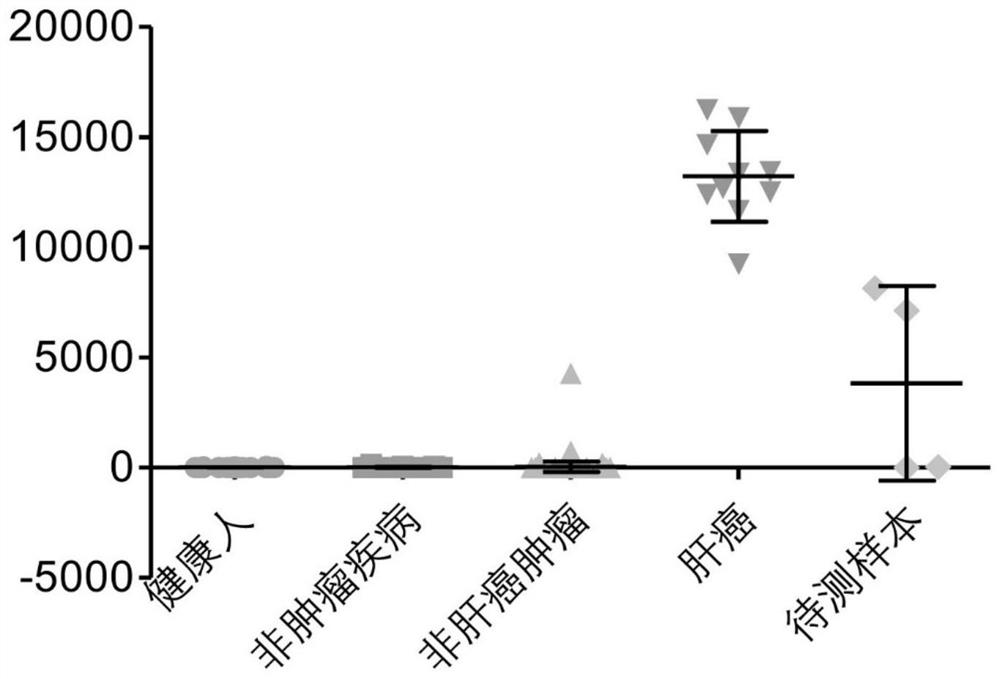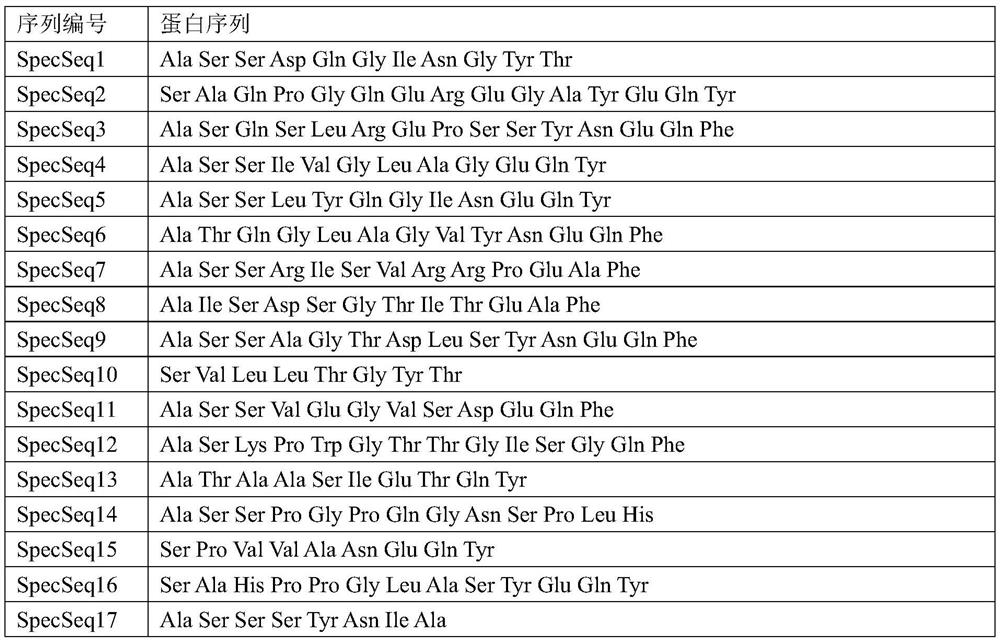Peripheral blood TCR marker for liver cancer as well as detection kit and application thereof
A marker and peripheral blood technology, applied in the field of genetic testing, can solve the problems of large workload required for testing, limitations of early tumor diagnosis, pain and injury to patients, etc., and achieves easy sampling, reduced testing costs, and low labor costs. Effect
- Summary
- Abstract
- Description
- Claims
- Application Information
AI Technical Summary
Problems solved by technology
Method used
Image
Examples
Embodiment 1
[0076] Through immunographic analysis, the liver cancer TCR marker CDR3 sequence set was obtained:
[0077] 1. Sampling and immune map analysis
[0078] Collect 1301 control groups (including healthy people and patients with non-tumor diseases, 1300 people for model building, 1 healthy person for verification), 11 liver cancer patients (10 people for model building, 1 person for verification) and Peripheral blood (10mL per person) of a subject with unknown health status, through high-throughput sequencing to obtain the amino acid sequence of the epitope 3 (CDR3) of the TCR of the subject and the control group, to ensure the functional TCR of each sample The total number of CDR3 sequences should not be less than 30,000;
[0079] 2. The CDR3 sequence of the TCR of each sample is randomly sampled without replacement, so that the total number of CDR3 sequences of each sample is 30,000. For any specific CDR3 sequence X, the number of repeated occurrences in the single-sample sequ...
Embodiment 2
[0086] Verify the specificity of the liver cancer TCR marker CDR3 sequence set:
[0087] 1. Sampling and immune map analysis
[0088] Peripheral blood (10mL per person) was collected from 335 non-hepatic cancer patients and 4 subjects with unknown health status, and the amino acid sequences of the TCR epitope 3 (CDR3) of the subjects and the control group were obtained by high-throughput sequencing , to ensure that the total number of functional TCR CDR3 sequences of each sample is not less than 30,000; random non-replacement sampling is performed on the TCR CDR3 sequences of each sample, so that the total number of CDR3 sequences of each sample is 30,000.
[0089] 2. Randomly select 100 healthy people and 45 non-tumor disease patients from the control group in Example 1.
[0090] 3. According to the immune profiles of 100 healthy people, 45 non-tumor disease patients, and 10 liver cancer patients from Example 1, and 335 non-liver cancer tumor patients and 4 subjects with unk...
PUM
| Property | Measurement | Unit |
|---|---|---|
| Sensitivity | aaaaa | aaaaa |
| Sensitivity | aaaaa | aaaaa |
| Sensitivity | aaaaa | aaaaa |
Abstract
Description
Claims
Application Information
 Login to View More
Login to View More - R&D
- Intellectual Property
- Life Sciences
- Materials
- Tech Scout
- Unparalleled Data Quality
- Higher Quality Content
- 60% Fewer Hallucinations
Browse by: Latest US Patents, China's latest patents, Technical Efficacy Thesaurus, Application Domain, Technology Topic, Popular Technical Reports.
© 2025 PatSnap. All rights reserved.Legal|Privacy policy|Modern Slavery Act Transparency Statement|Sitemap|About US| Contact US: help@patsnap.com



